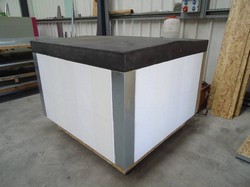Clean, green retrofit panels for energy-efficient buildings
Less than 1.5 % of the European building stock is newly built each year. Older buildings that represent the majority of this stock mostly exhibit low energy performance. They urgently require renovation work. The EU-funded MF-RETROFIT(opens in new window) (Multifunctional facades of reduced thickness for fast and cost-effective retrofitting) project developed multifunctional facades by employing technologies that can improve all aspects of an exterior facade panel, from significantly reducing weight, thickness and installation time to increasing shelf life. The MF-RETROFIT team designed a layered structure, integrating various materials with individual and synergetic functions. To achieve this, it used several techniques and technologies that employ different raw materials processed through low energy and low toxicity means. Project partners integrated phase-change materials into the panel in order to provide thermal storage capacity. They modified these materials to improve their functionality. All raw and final materials were fully characterised with respect to structure and properties. Mechanical, insulating and fire resistance properties of individual layers and integrated panels were measured according to relative standards. To produce a wide variety of nanoparticles, scientists devised an innovative nanoparticle dispersion method by using the high-energy ball milling process. They tested the nanoparticles in order to upgrade certain properties or processing of materials. Four models were developed to predict the panel’s thermal, hydrothermal and mechanical behaviour. MF-RETROFIT developed additional models to evaluate the panel’s performance throughout the year at different climatic zones. Scaled-up prototype panels were produced and successfully tested. Finally, the project’s viability and sustainability were ensured by analysing costs and environmental impacts. With a 40 % reduction in weight and volume, the innovative facades enhance thermal insulation, protect from fire, offer self-cleaning properties through photocatalytic layers, control humidity and moisture, and provide a structurally stable exterior walling. MF-RETROFIT work will help the EU to reach its 2020 energy consumption targets.







